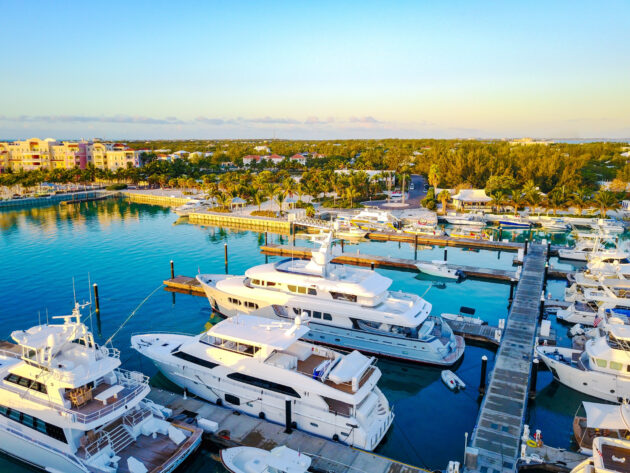
Table of Contents
- 1 Key Takeaways
- 2 Introduction to Vessel Retrofitting
- 3 Why Consider Retrofitting Your Vessel?
- 4 Technological Innovations in Vessel Retrofitting
- 5 Critical Steps in the Retrofitting Process
- 6 Avoiding Common Retrofitting Pitfalls
- 7 Case Study: Successful Retrofits in the Industry
- 8 The Future of Retrofitting in Maritime Technology
Key Takeaways
- Retrofitting can significantly improve vessel performance and fuel efficiency.
- Modern technologies offer a range of solutions, from hardware updates to software optimizations.
- Enhanced safety features and compliance with updated regulations are vital benefits.
Introduction to Vessel Retrofitting
Staying ahead in the dynamic maritime industry means continuously adapting to new challenges and opportunities. Retrofitting is a significant strategy for upgrading older vessels to meet current demands. This process involves updating a ship with the latest technologies and systems, enhancing its performance and efficiency.
Why Consider Retrofitting Your Vessel?
The benefits of retrofitting a vessel are multifaceted, offering enhancements that range from immediate cost savings to long-term strategic gains. Improved fuel efficiency is a crucial advantage, helping reduce operational costs significantly. For instance, retrofitting can reduce emissions by 10% to 30%, as highlighted by the International Maritime Organization’s studies [Source]. Shipowners can improve fuel economy by improving a vessel’s propulsion systems or hull design economy. Additionally, retrofitting provides a unique opportunity to update a vessel’s technology stack, incorporating newer systems that enhance maritime safety, communication capabilities, and overall crew productivity. By investing in a Vessel Retrofit, shipowners can extend the operational lifespan of their fleets, ensuring they remain competitive and compliant with modern maritime regulations without the need for a complete replacement.
Technological Innovations in Vessel Retrofitting
Today’s technological ecosystem offers various solutions that can be integrated into existing vessels through retrofitting. One significant innovation is adopting advanced propulsion systems that use hybrid technology, reducing reliance on conventional fuels and minimizing environmental impact. Another noteworthy advancement is the implementation of AI technologies in ship operations. These systems can process vast amounts of data to optimize route planning, significantly enhancing operational efficiency and safety by considering weather conditions and traffic patterns [Source]. Such innovations contribute to better energy efficiency and align with global sustainability goals.
Critical Steps in the Retrofitting Process
- Assessment: A comprehensive review is the first step, where experts evaluate the current state of the vessel. This includes analyzing current performance, structural integrity, and system capabilities to identify areas needing upgrades.
- Design Planning: Following assessment, a detailed retrofitting plan is drafted with inputs from engineers, naval architects, and technology experts. This ensures the new systems integrate seamlessly with existing structures and achieve the intended improvements.
- Implementation: Skilled workers execute the retrofit, involving meticulous attention to detail. High-quality materials and state-of-the-art technologies are employed to ensure the vessel gains the desired advancements in capability and efficiency.
- Testing and Adjustment: Post-installation, thorough testing ensures that all systems perform optimally. Any adjustments are guided by rigorous trials and evaluations to confirm that the vessel achieves the planned performance benchmarks.
Avoiding Common Retrofitting Pitfalls
Although retrofitting yields many advantages, it also comes with potential challenges. Budget overruns are a common pitfall, often stemming from unforeseen complications during the retrofit process. Detailed planning and open communication with all stakeholders are essential to avoid such issues. Compatibility issues might arise if the new technologies don’t integrate seamlessly with existing systems, underscoring the importance of involving expert consultants in early planning. Setting realistic timelines and budgets can prevent conflicts and ensure a smooth transition toward enhanced vessel capabilities.
Case Study: Successful Retrofits in the Industry
Examining real-world examples can offer valuable insights into the success of retrofitting projects. Many shipping companies have successfully retrofitted their fleets, witnessing transformative improvements in their vessels’ operations. For instance, ships adopting new energy-efficient propulsion technologies or upgraded safety systems have seen measurable enhancements in operational efficiency and safety records. These case studies demonstrate that with strategic planning and execution, retrofitting can significantly boost a vessel’s market competitiveness, ensuring longevity in a rapidly changing maritime landscape.
The Future of Retrofitting in Maritime Technology
The maritime industry is increasingly looking towards retrofitting to align with global sustainability goals and technological advancements. As digital solutions and green technologies evolve, the retrofit process becomes more accessible and beneficial for a broader range of vessels. By embracing these innovations, vessel operators can address environmental concerns while achieving the operational efficiency necessary to succeed in the modern maritime market. Continuous advancements in retrofitting technologies promise further benefits, making it an invaluable tool for shipping companies aiming to stay ahead in a competitive industry.
